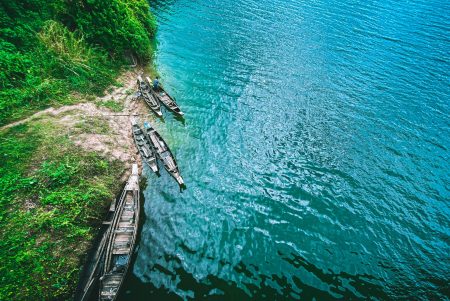Bangladesh’s mangroves threatened by development

A 6 km-long bridge is being built in Bangladesh. This will increase connectivity across the country, and has already prompted development in the south-western Khulna Division. This region is home to the largest mangrove forest in the world: the Sundarbans. These mangroves are already under pressure from human activities, but the growth of real estate, fisheries, tourism, and resorts in the area puts them at even even greater risk.
The new bridge is expected to increase national GDP by up to 1.2%. However, if this comes at the price of losing much of the Sundarbans ecosystem, then the net effect on human well-being may be adverse. This is because the Sundarbans provide an irreplaceable set of services to people both locally and globally:
- Rich biodiveristy: the Sundarbans are home, for example, to 49 mammal species, including the endangered Bengal tiger and Asia’s two remaining freshwater dolphin species. This makes them indispensable for wildlife conservation, which can also support well-managed, sustainable tourism.
- Livelihood provision: 3.5 million people depend on the Sundarabans for their livelihoods and income. The economic value of provisioning services like fishing, timber, thatching material and honey was estimated to be US$ 744,000 annually (2001-2010). The cultural services were estimated to be worth US$ 42,000 annually. Yet, these numbers far from capture the full value of the mangroves – critically they exclude the carbon storage, biodiversity and storm protection values of the habitat.
- Protection from cyclones and storms: the mangrove forest slows high winds and attenuates waves, therefore protecting communities and infrastructure from extreme weather. For example, wave height is reduced by 13-66% for every 100m of mangroves; this effect accumulates over larger areas of mangrove forest, thus reducing the impact of storm surges dramatically.
The Sundarbans are already threatened by sea level rise, salinity intrusion, habitat degradation and biodiversity loss. With more people entering this part of the country, the pressure on the land for development and resource use will only increase. There is therefore a desperate need for strict regulations on habitat clearance, land fill, waste disposal and wastewater discharge. To avoid irreversible damage, the diverse and high values of the Sundarbans must be better recognised and reflected in the protection they receive. The consequences of failing to sufficiently protect the Sundarbans could be detrimental for the health and well-being of local people, and lead to the loss of globally-valuable biodiversity and carbon storage.
Read the paper here, co-authored by Nathalie Seddon, NbSI Director.




